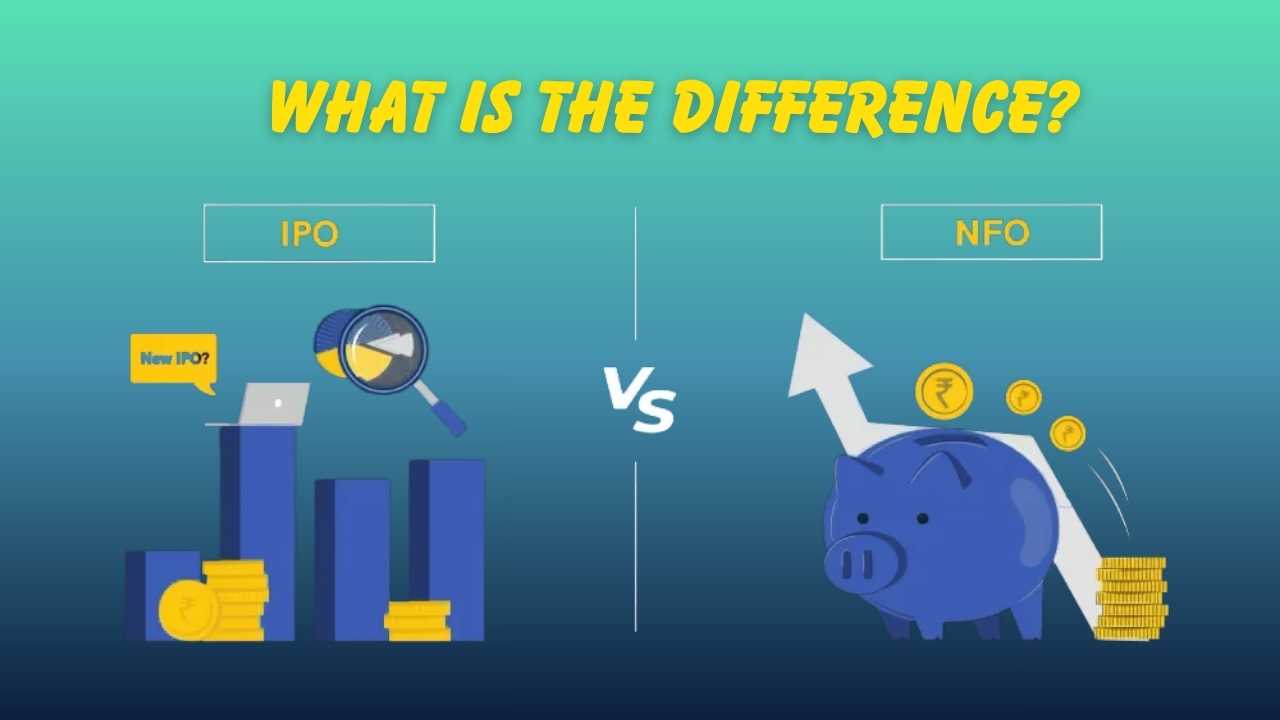PMS vs Mutual Funds: Investing has come a long way from just saving money in a bank or buying a few stocks. Today, there are sophisticated options like PMS (Portfolio Management Services) and Mutual Funds that let you grow your money with the help of professional managers.
Both PMS and Mutual Funds offer access to professionally managed portfolios, but they serve different kinds of investors and come with their own pros and cons. In this guide, we’ll explain what PMS and Mutual Funds are, how they work, and whether it makes sense for you to invest in both.
What is PMS (Portfolio Management Service)?
PMS is a personalized investment service where a professional portfolio manager manages your money based on your unique financial goals, risk appetite, and situation.
Unlike mutual funds where your money is pooled with others, in PMS, you directly own the individual stocks or securities. The portfolio is built exclusively for you, making it highly customized.
Key Features of PMS
- Tailor-made portfolios: Completely customized to your needs and goals.
- Direct ownership: Securities are held in your name.
- Active management: Portfolio managers make strategic buy/sell decisions frequently.
- Minimum investment: Generally requires ₹50 lakhs or more.
- Transparency: You receive regular, detailed reports on portfolio performance.
Example:
If you invest ₹75 lakhs in PMS, your manager might allocate ₹25 lakhs in large-cap stocks, ₹30 lakhs in mid-cap, and ₹20 lakhs in debt instruments, tailored to your preferences and market outlook.
What is a Mutual Fund?
A mutual fund pools money from many investors to invest in a diversified portfolio of stocks, bonds, or other securities. It is managed by professional fund managers and regulated by SEBI.
Key Features of Mutual Funds
- Affordable: You can start investing with as little as ₹500 through SIPs.
- Diversified: Spreads risk across many assets.
- Professionally managed: Fund managers handle all investment decisions.
- Highly liquid: Easy to buy or redeem at prevailing NAV.
- Regulated and transparent: Regular disclosures and safety for retail investors.
Example:
Investing ₹10,000 in an equity mutual fund like “ABC Bluechip Fund” means your money is pooled with others and invested in stocks like Infosys, Reliance, and HDFC Bank. You own units of the fund, not individual stocks.
PMS vs Mutual Funds: Key Differences
| Parameter | PMS | Mutual Funds |
|---|---|---|
| Minimum Investment | ₹50 lakhs or more | As low as ₹500 |
| Ownership | Direct ownership of stocks | Indirect ownership through fund units |
| Customization | Fully tailored portfolios | Same portfolio for all investors |
| Management Style | Highly active, personalized | Active or passive, standard for all |
| Risk Level | Higher (concentrated portfolio) | Moderate (diversified) |
| Taxation | Taxed on each transaction | Taxed only on redemption |
| Transparency | Detailed, real-time reporting | Monthly/quarterly reports |
| Suitable for | High-net-worth individuals | Retail and small investors |
How PMS Works
- Investor Profiling: Your goals, risk tolerance, and time horizon are assessed.
- Portfolio Construction: Manager builds a personalized portfolio.
- Execution: Stocks or securities are bought/sold in your name.
- Monitoring: The portfolio is continuously tracked and rebalanced.
- Reporting: You receive regular detailed performance updates.
Benefits of PMS
- Customized investment plans.
- Flexibility and faster decisions.
- Full control and transparency.
Disadvantages of PMS
- High fees.
- Lower liquidity.
- High minimum investment requirement.
How Mutual Funds Work
- Investors pool money into a single fund.
- Fund manager invests across multiple assets.
- NAV is calculated daily based on market value.
- Investment gains or losses reflect in NAV.
Benefits of Mutual Funds
- Easy to start and exit.
- Cost-effective management.
- Suitable for long-term wealth creation.
- Lower risk through diversification.
Disadvantages of Mutual Funds
- Less control over individual investments.
- Returns depend on market movements.
Who Should Invest in PMS?
- High-net-worth investors with ₹50 lakhs or more.
- Those wanting direct ownership and personalized management.
- Investors seeking to actively manage risks and opportunities.
- Ideal for specific tax or asset allocation goals.
Not suitable for beginners or those with limited capital.
Who Should Invest in Mutual Funds?
- Beginners and small investors.
- Those wanting diversified exposure without managing daily trades.
- Investors using SIPs for disciplined investing.
- Ideal for liquidity and easy access.
Not suitable for those wanting full portfolio control.
Can You Invest in Both PMS and Mutual Funds?
Yes! Investing in both can help balance risk and returns.
Why Consider Both?
- Diversification: PMS offers customization, mutual funds add broad diversification.
- Risk-Return Mix: PMS aims for higher returns; mutual funds bring stability.
- Goal-Based: Use mutual funds for long-term goals, PMS for aggressive growth.
- Tax Efficiency: Combining both can optimize tax outcomes.
Example:
A 40-year-old investor might allocate 70% to mutual funds for steady growth and 30% to PMS for high-return potential.
PMS vs Mutual Funds: Risk Comparison
| Risk Type | PMS | Mutual Funds |
|---|---|---|
| Market Risk | High (concentrated portfolios) | Moderate (diversified) |
| Liquidity Risk | Medium (may have lock-in) | Low (high liquidity) |
| Manager Risk | High (depends on one manager) | Low (team-managed) |
| Volatility | Higher | Lower |
PMS vs Mutual Funds: Taxation Differences
- PMS: Taxed on every buy/sell transaction; short-term gains (less than 1 year) taxed at 15%; long-term gains (more than 1 year) taxed at 10% beyond ₹1 lakh.
- Mutual Funds: Taxed only on redemption; equity funds follow similar rates; debt funds have different rules with indexation benefits.
PMS vs Mutual Funds: Cost Comparison
| Expense Type | PMS | Mutual Funds |
|---|---|---|
| Management Fees | 2-3% annually | 0.5-1.5% annually |
| Performance Fee | Up to 20% of profits | None |
| Transaction Charges | Extra charges apply | Included in expense ratio |
Mutual funds are cheaper and suitable for cost-conscious investors; PMS justifies higher fees through customization.
Performance Perspective
PMS may outperform mutual funds in bull markets due to flexibility but can be riskier in downturns. Mutual funds often deliver steadier returns due to diversification. Manager selection is critical for PMS.
Which One Should You Choose?
If you have less than ₹50 lakhs to invest, mutual funds are the practical choice for easy access, diversification, and cost efficiency.
If you have sizable capital and understand market risks, PMS can complement your mutual fund holdings with personalized management.
For many, a hybrid approach combining both brings the best balance of risk and growth.
Final Thoughts
Both PMS and mutual funds are essential tools for growing wealth. PMS offers exclusivity, control, and active management. Mutual funds provide accessibility, diversification, and liquidity.
If you can, invest in both to enjoy professional management tailored for high returns and broad, stable growth.
Your choice should be guided by your goals, risk tolerance, and capital—never just returns.
Learn More:
- Best Small-Cap Index Funds
- 10 Debt Mutual Funds That Outperformed in the Last 1 Year with 10% to 24% Returns
- Best Mutual Funds for Senior Citizens
- Best Green Hydrogen Stocks in India
PMS and Mutual Funds: FAQs
Can I invest in PMS and Mutual Funds together?
Yes, many investors diversify across both for balanced portfolios.
Is PMS riskier than mutual funds?
Usually, yes. PMS portfolios are more concentrated and less diversified.
What is the minimum investment for PMS?
₹50 lakhs as per SEBI norms.
Are PMS returns guaranteed?
No. Returns depend on market and manager skill.
Which gives better returns—PMS or Mutual Funds?
PMS can outperform during strong markets; mutual funds usually offer steadier, longer-term returns.














